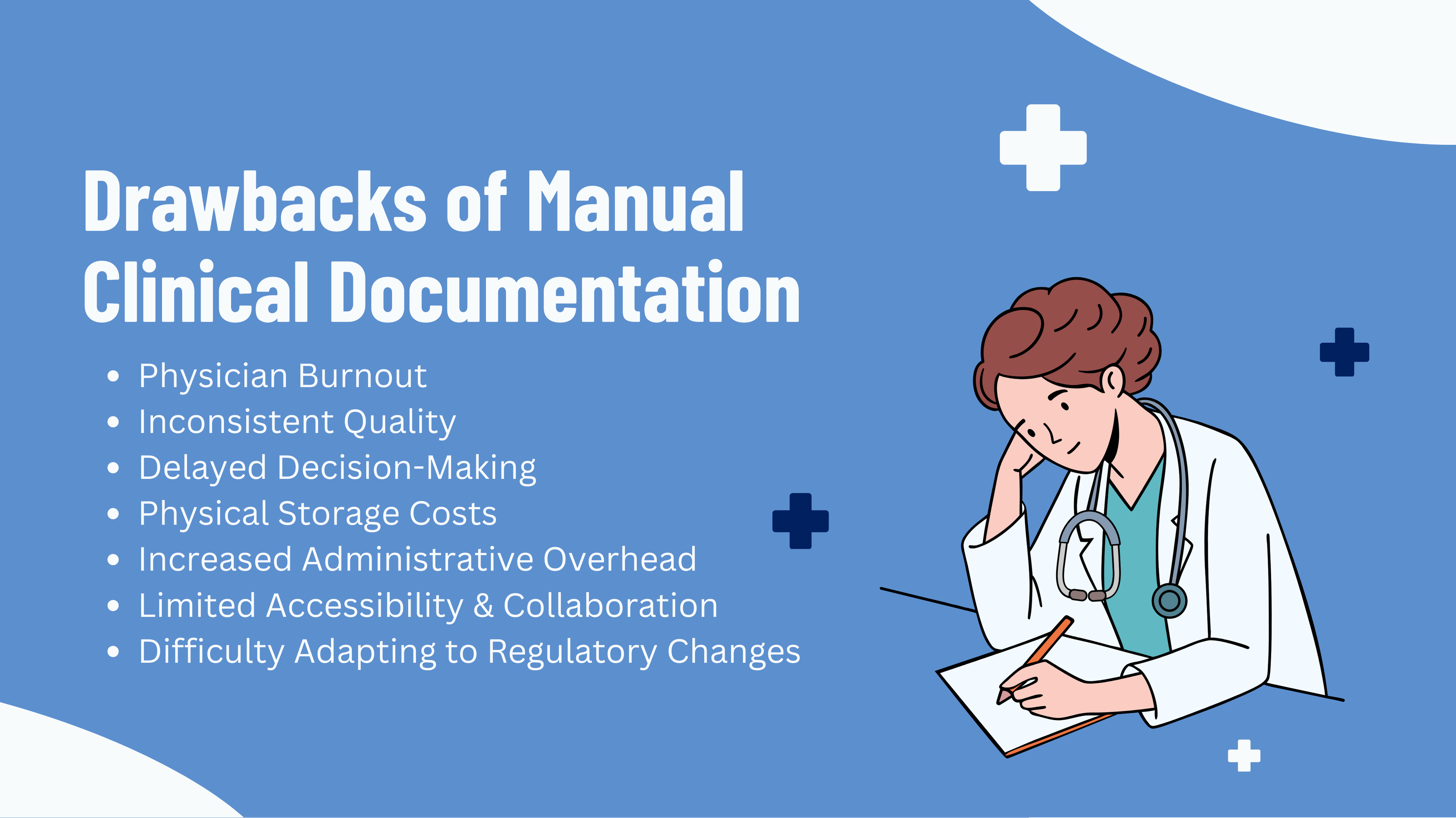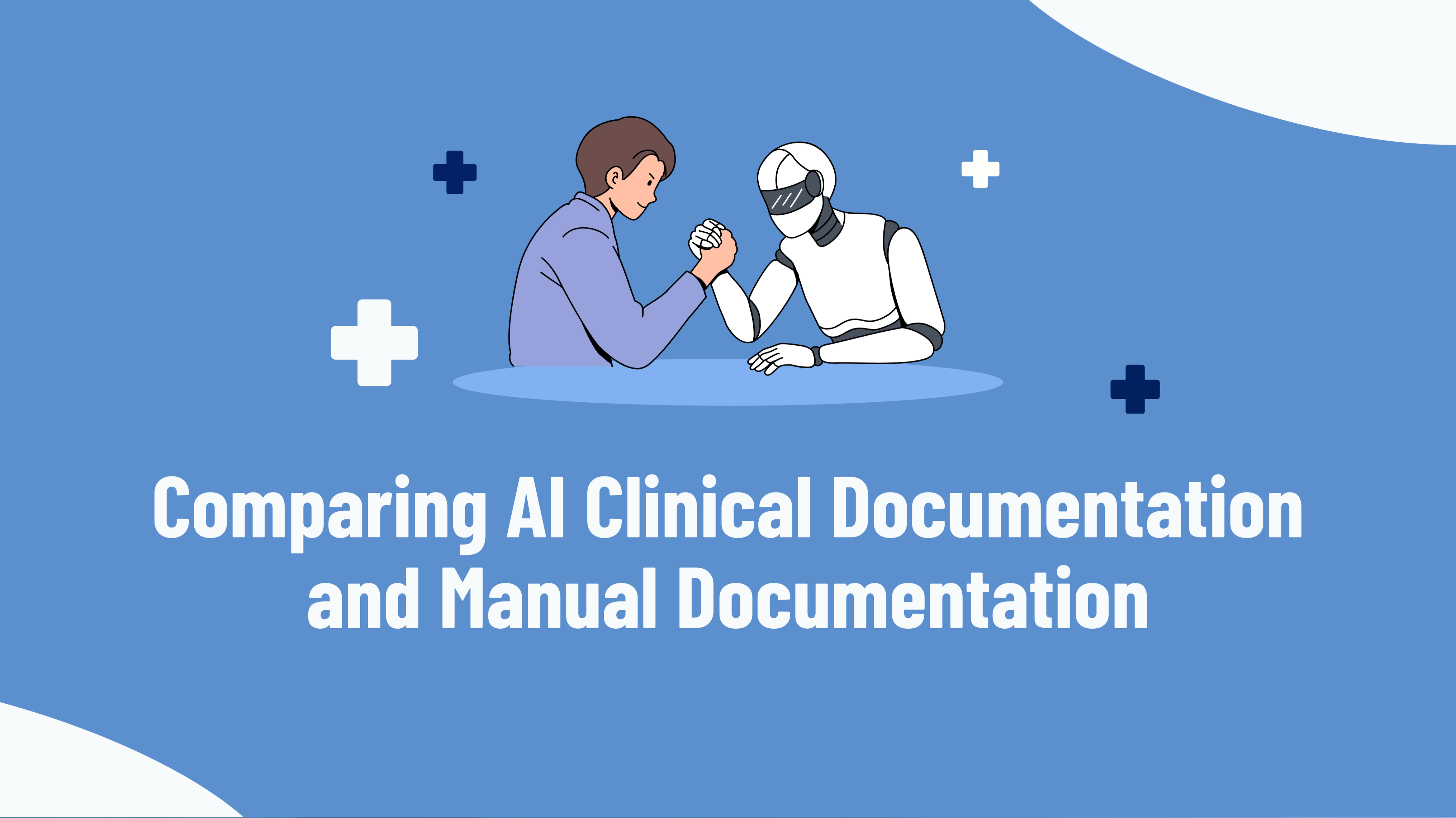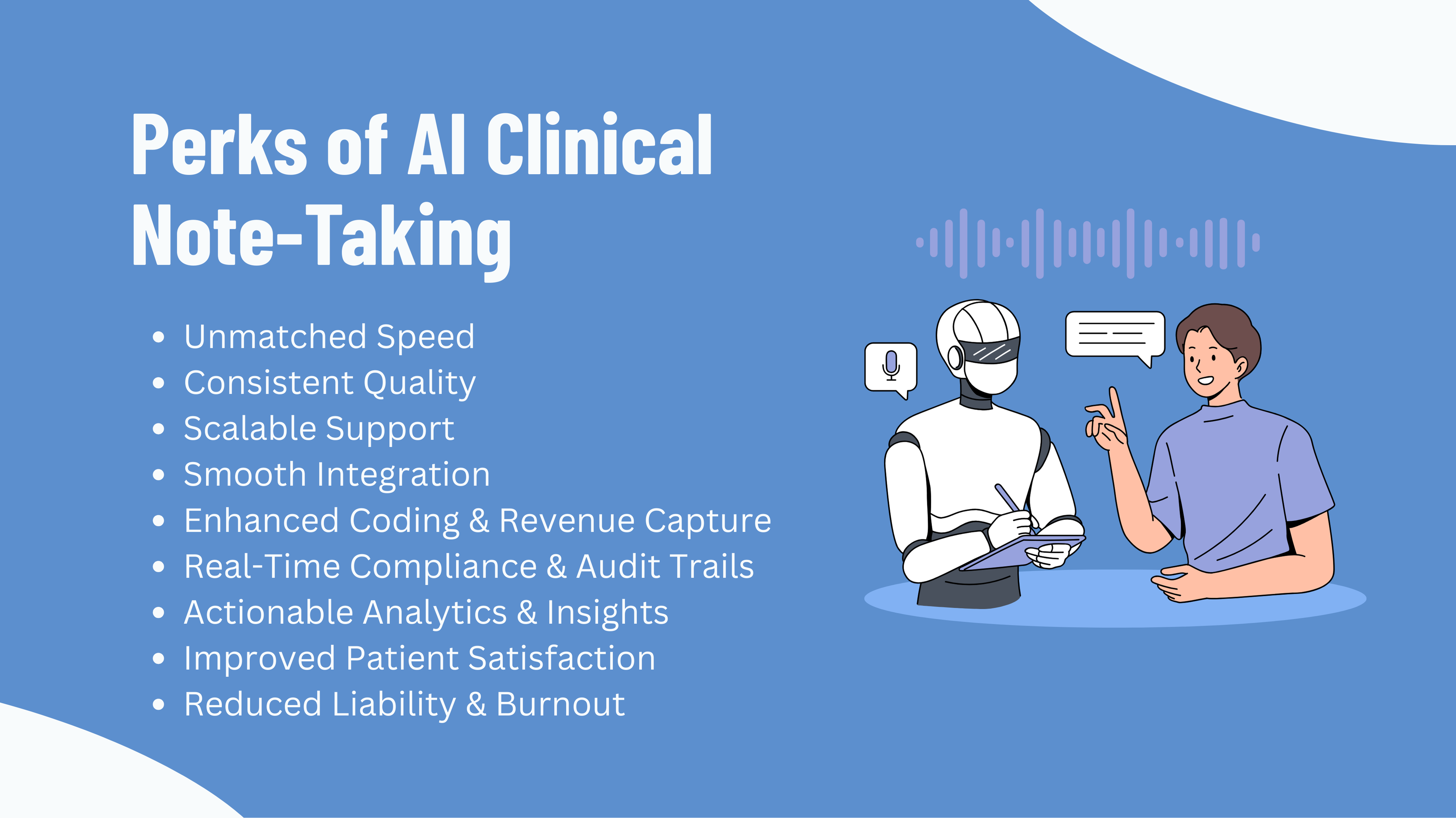
AI Clinical Documentation Benefits: Revolutionizing Healthcare Efficiency
Discover how AI-powered clinical documentation is transforming healthcare by reducing physician burnout, improving accuracy, and enhancing patient care through automated documentation solutions.

The Documentation Challenge in Modern Healthcare
Today's clinicians face a perfect storm: growing patient loads, complex treatment plans, and an ever-expanding maze of electronic health record requirements. It's no wonder that physicians now spend nearly 50% of their shift clicking through charts rather than connecting face-to-face with patients.
That's where AI clinical documentation benefits step in. By listening, recording, transcribing, and structuring every word of the patient encounter, AI-powered tools transform hours of manual note-taking into a 60-second easy process. The result is effective and powerful; Providers reclaim critical time, reduce burnout, and deliver care with renewed focus and compassion.
Productivity Comparison: AI vs. Manual Documentation
The difference between AI-powered and manual documentation is staggering:
Productivity Metrics Comparison
| Metric | Manual Documentation | AI-Powered Documentation |
|---|---|---|
| Avg. time per patient note | 5-10 minutes | 30-45 seconds |
| Daily note volume | 40-80 notes | 80-120 notes |
| After-hours work | 1-2 hours nightly | <15 minutes nightly |
| Error rate | 5-10% | <1% |
Key Benefits
- Time Saved: AI can slash note-writing time by up to 80%
- Throughput Boost: Clinicians can complete twice as many notes in the same shift
- Work-Life Balance: After-hours documentation drops from hours to minutes

AI Clinical Documentation vs. Manual Documentation
Comparison Dimensions:
1. Accuracy & Completeness
- Manual: Relies on clinician typing, prone to missed fields, and inconsistent terminology
- AI: Uses natural-language processing to catch every symptom, medication, and code
2. Cognitive Load
- Manual: Clinicians must remember to toggle screens, find templates, and insert codes
- AI: Listens in the background; you simply converse normally
3. Training & Onboarding
- Manual: New hires spend days or weeks mastering EHR workflows
- AI: Intuitive voice-first interface gets clinicians up and running in under an hour
4. Quality Control
- Manual: Audits find errors in ~15-20% of notes
- AI: Built-in QA flags missing fields in real time

Enhancing Healthcare Documentation Efficiency
Organizations using AI documentation tools report a 30% reduction in claim denials and a 25% decrease in chart completion time. The four pillars of efficiency are:
1. Real-Time Capture
- AI transcribes consultations as they happen
- No memory reliance required
2. Auto-Coding
- CPT, ICD-10, and HCPCS codes populate automatically
- Reduces billing delays
3. Template Agility
- Dynamic templates adjust to specialty and visit type
- Instant adaptation to clinician preference
4. One-Click EHR Sync
- Generated notes push directly into your EHR
- No copy/paste or double entry required
Advantages of AI Documentation
AI-powered clinical documentation offers numerous advantages that transform healthcare workflows:
1. Unmatched Speed
- Complete, structured clinical note in under 60 seconds
- Slashes after-hours chart time
- Enables seeing more patients during shift
2. Consistent Quality
- Standardized terminology
- Templated workflows
- Built-in medical code libraries
3. Scalable Support
- Works for solo practitioners to large health systems
- No need for additional scribes
- Cost per note decreases with volume
4. Smooth Integration
- FHIR API connectors for major EHR systems
- No middleware required
- Zero double-entry
5. Enhanced Coding & Revenue
- 99%+ accuracy in coding
- 20-30% increase in captured revenue
- Eliminates missed or miscoded charges
6. Real-Time Compliance
- Every action logged and timestamped
- Built-in compliance checks
- Immediate flagging of missing PHI fields
7. Actionable Analytics
- Surface trends in conditions
- Flag high-utilization services
- Enable data-driven decisions
8. Improved Patient Satisfaction
- Better eye contact and rapport
- More "personal" and "engaging" visits
- Higher HCAHPS and review scores
9. Reduced Liability & Burnout
- Accurate, complete records
- Eliminates midnight charting
- Safer, more focused care
Limitations of Manual Clinical Documentation
Healthcare organizations are rapidly shifting toward clinical efficiency tools to mitigate these challenges:
1. Physician Burnout
- 70% of clinicians report excessive charting as top stressor
- Leads to work-life imbalance and higher turnover
- Costs up to $7,600 per physician in replacements
2. Inconsistent Quality
- Note completeness varies during peak hours
- May omit up to 15% of key findings
- Forces downstream providers to waste time clarifying
3. Delayed Decision-Making
- 24-48 hour delay in note entry and review
- Delays care coordination and referrals
- May lead to longer lengths of stay
4. Physical Storage Costs
- Requires dedicated space and fireproof cabinets
- $0.20-$0.50 per chart per year
- 10-15 minutes retrieval time per request
5. Increased Administrative Overhead
- Additional support staff needed
- $15-$25 per hour per employee
- Risk of lost or misfiled records
6. Limited Accessibility
- Can't be accessed simultaneously
- Hampered real-time consultation
- Extra steps for telehealth visits
7. Regulatory Challenges
- Constant template revisions needed
- Consumes IT and administrative resources
- Risk of audit findings and penalties
Adopting AI Documentation Software
AI-powered software amplifies documentation optimization, creating a truly paperless, frictionless environment. Steps to adopt AI in healthcare documentation:
1. Assess Your Workflow
- Map current pain points
- Identify note time and error hotspots
- Document billing delays
2. Pilot with a Specialty
- Start in high-volume clinic
- Measure ROI quickly
- Gather feedback and metrics
3. Train & Onboard
- Leverage vendor-led sessions
- 1-2 sessions typically sufficient
- Focus on practical application
4. Measure & Iterate
- Track key metrics
- Monitor note turnaround time
- Assess claim denial rates
- Evaluate clinician satisfaction
The Future of Clinical Documentation
AI-powered clinical documentation transforms hours of manual charting into seconds, boosting productivity, accuracy, and clinician well-being. By standardizing notes, automating coding, and integrating seamlessly with your EHR, these tools free you to focus on patient care, not paperwork.
The future of healthcare documentation is here, and it's powered by AI. The benefits are clear: reduced burnout, improved accuracy, enhanced patient care, and better work-life balance for healthcare providers. As technology continues to evolve, we can expect even more sophisticated solutions that will further revolutionize the way we document and deliver healthcare.
